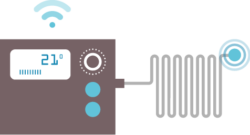FAQs
 |  |  |  |  |  |
| Home | Digital business | Energy and utilities | Financial services | Real estate and infrastructure | Transport and automotive |
- What does the report look at?
- What is “next generation connectivity”?
- What are the findings?
- Who did the EIU talk to?
- Why might clients be interested in this?
- How can I start a conversation with my clients?
The EIU report looks at what next generation connectivity will mean for our clients and their businesses. This isn’t just about faster downloads and more bandwidth: next generation connectivity has the transformative potential to facilitate completely new ways of doing business. The impact is likely to be different in different sectors, so the report picks out points of interest in different sectors, as well as different countries.
What is “next generation connectivity”?
Next generation connectivity encompasses:
- the next (fifth) generation of mobile phone infrastructure (5G) (work is underway to establish international standards, meanwhile pilot projects are underway); but also
- full fibre broadband (meaning that fibre optic cable reaches all the way to the end user, replacing old copper wire “local loop” infrastructure);
- satellite internet technologies (which are becoming more widely available);
- other technologies which enable fast connections over small areas.
The report opens with an Executive Summary and a discussion of past, present and future connectivity, before looking at broad themes emerging from the survey:
- connectivity merges the physical and digital: the distinction between the physical and digital worlds is blurring in a number of ways. More or less anything can be connected into the Internet of Things so that digital data can be collected, movements can be tracked, insights generated into performance, maintenance, optimisation of function, location etc. IoT and data analytics will be very important. Augmented, virtual and mixed reality offers ways to overlay digital information onto the real world and is widely seen as another major area of development. Meanwhile, artificial intelligence will offer new ways to interpret real time data and will be key in transport and logistics, enabling navigation for driverless vehicles and robotics.
- connectivity pushes boundaries: next generation connectivity will require new infrastructure, and the demands for high reliability and low latency/fast speed placed on connectivity will be greater than ever. Autonomous vehicles will require real time connectivity fast enough to generate split second responses to their environment. Streamed augmented and virtual reality content will require fast and lag-free transfer of large quantities of data, for example for entertainment/gaming applications or for remote surgery. 5G infrastructure still needs to be built and standards agreed, but businesses are already planning ahead. Meanwhile, satellite internet services are no longer prohibitively expensive and can offer continuous international connectivity without the need to roam across multiple operators – useful, for example, for global logistics.
- preparing for the next wave of connectivity: hyper-connectivity opens up new possibilities for businesses which are facing innovation of both technology and business models: this is a very current boardroom issue. Connectivity and real time data transfer back to suppliers makes the “as a Service” model a possibility for assets which can be paid for on the basis of usage, rather than being sold outright. Digital business sector companies are ahead of the curve in embracing the possibilities of connectivity, and many were “born digital” (such as sharing platforms). For older businesses, the challenge of transforming using connectivity can be more complicated, but businesses in “physical industries” such as real estate, energy and transport all predicted increased interconnectivity within their sector. Mobility as a Service is expected to be a connectivity-driven disruptor in the Transport and Automotive sector, while in REI, connected smart buildings will be able to use data to anticipate and address problems before they occur. Roadblocks anticipated to challenge the pursuit of greater connectivity included privacy concerns, safety concerns and security concerns.
- conclusions: businesses must be ready to learn lessons from the early adopters of connectivity and be ready to grasp the resulting opportunities:
- experiment, adopting a “fail fast” approach focused on early wins and swift increases in productivity, revenue or efficiencies;
- invest in skills and creating teams to breathe new life into tried and tested approaches;
- build new partnerships, and seek to develop new ways of sharing access to third party data whether for access to data;
- tackle security concerns and take a disciplined approach to IoT security.
The EIU team spoke to 550 senior executives from 11 countries and from 5 of the key Osborne Clarke sectors: Digital Business, Energy & Utilities, Financial Services, REI, and Transport & Automotive. In-depth interviews were conducted with ten executives from across the sectors, and their thoughts and insights are scattered throughout the report.
Why might clients be interested in this?
Next generation connectivity enables wide disruption and transformation across all sectors, so all need to be ready to take advantage of opportunities. As well as the particular issues in each sector, there are cross-sector “big issues” which are relevant to all, such as the approach to cybersecurity, data, delivering connectivity and developing new business models.
How can I start a conversation with my clients?
Each of the sector and big issues pages includes a section titled “Discussion points”. These offer suggestions for how you can engage a client in discussion about the legal issues which will be presented by next generation connectivity. In some sectors or subsectors where the concrete impact is less clear, take the opportunity to learn from your clients how they expect their business to change.
The overarching objective which underpins commissioning this report is to generate instructions from clients about issues which the report has highlighted.

 Next-gen connectivity: internal
Next-gen connectivity: internal